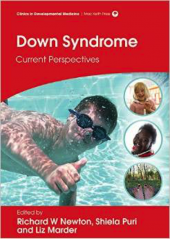Overview
- Renal and genitourinary disorders are not common in children or adults with Down syndrome but yet not rare. 2% of children with Down syndrome have renal and urinary tract abnormality. There is no evidence to screen or investigate in the absence of symptoms.
- All children with Down syndrome presenting with urinary tract infections, should be investigated with a renal ultrasound scan to detect any renal and urinary tract anomaÂlies, or renal scarring.
- Children presenting with bedwetting, difficulty in voiding, poor stream, post void dribbling or retention of urine should be investigated with an ultrasound of the urinary tract to detect any renal anomalies or a dysfunctional bladder.
- There is an increased prevalence of undescended testis in Down syndrome. This contributes to an increased lifetime risk of testicular cancer by 6.3. Regular examiÂnation of the testis throughout adulthood is recommended, particularly with a history of undescended testis.
Last updated: Feb 2015
Presentations at DSMIG Meetings
Materials from this meeting are available for members only who need to log in to access them. For details on how to become a member click here.
Additional Resources
Goede J, Weijerman ME, Broers CJ (2012) Testicular volume and testicular microlithiasis in boys with Down syndrome. J Urol 187: 1012–1017. doi: 10.1016/j.juro.2011.10.167. Epub 20 January 2012.
Hicks JA, Carson C, Malone PSJ (2007) Is there an association between functional bladder outlet obstruction and Down syndrome? Pediatr Urol 3: 369–374.
Kupferman JC, Druschel CM, Kupchik GS (2009) Increased prevalence of renal and urinary tract anomalies in children with Down syndrome. Pediatrics 124: 615–621.
Book Chapter-Renal and urinary tract anomalies
Christine Hardie and Rajiv Puri
in
Down Syndrome – Current Perspectives MacKeith 2015
 Edited by Richard Newton , Shiela Puri and Liz Marder
Edited by Richard Newton , Shiela Puri and Liz Marder
